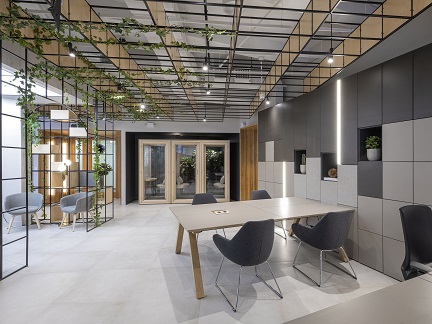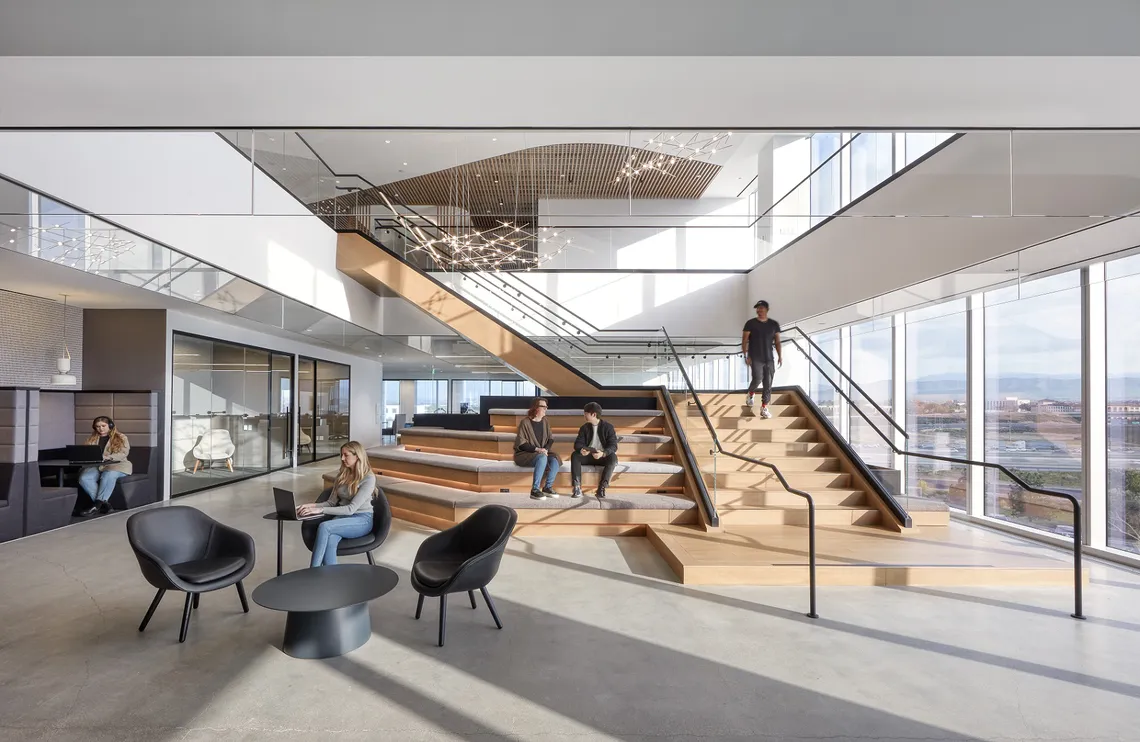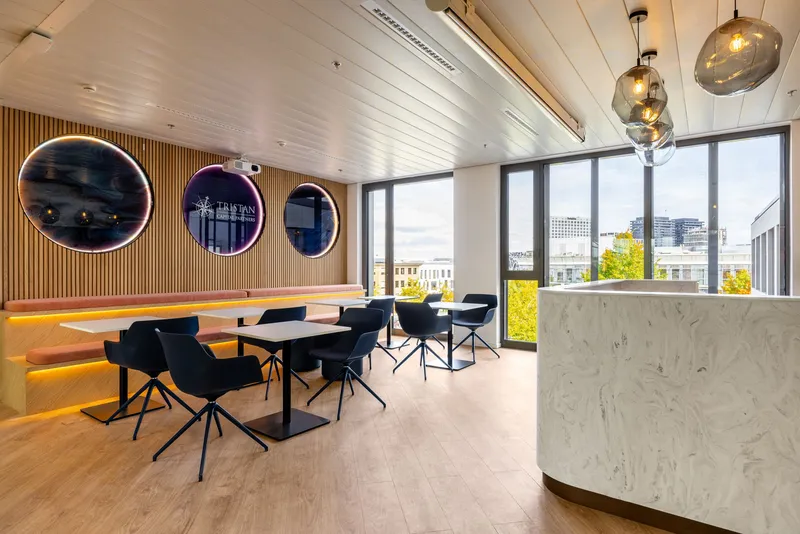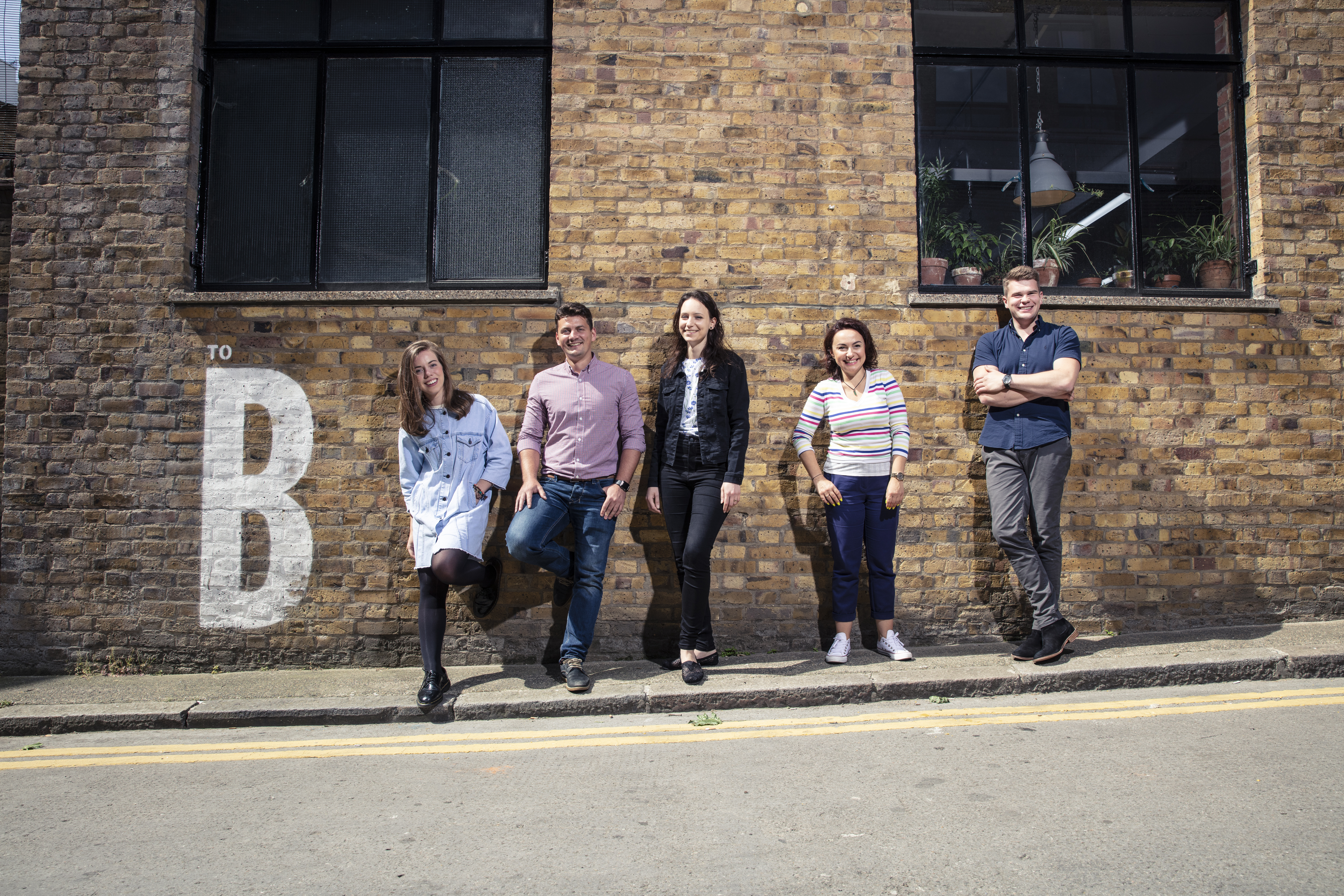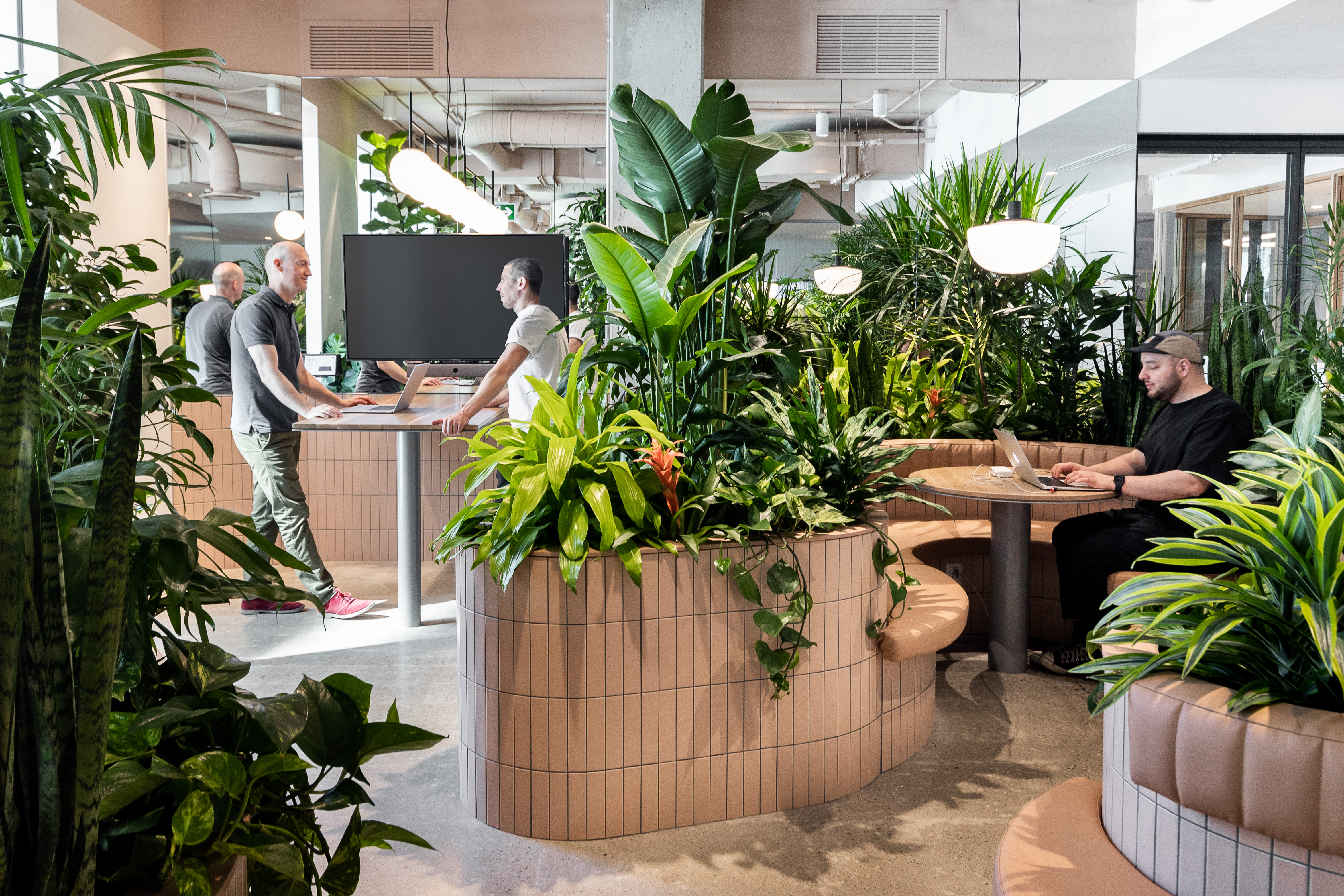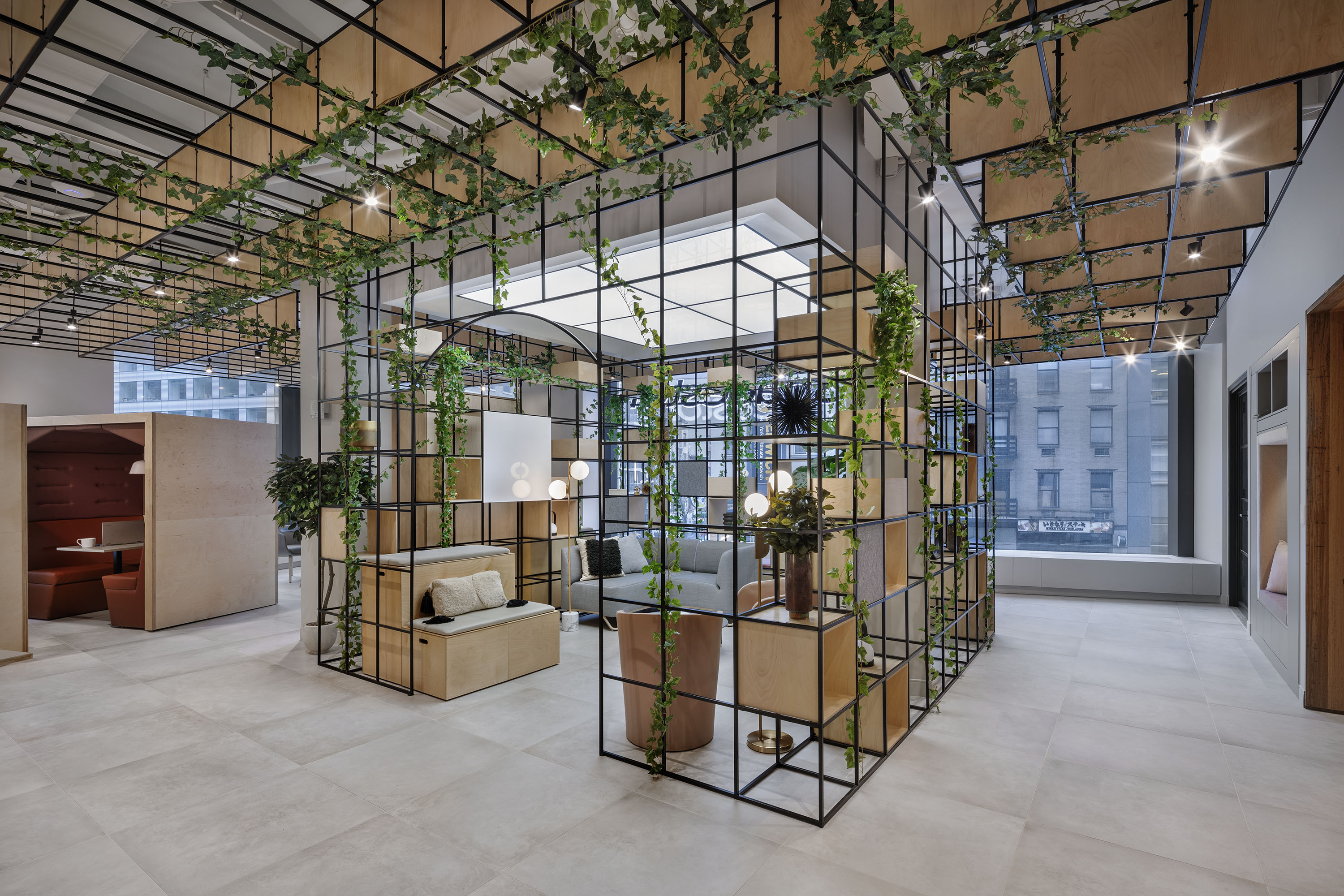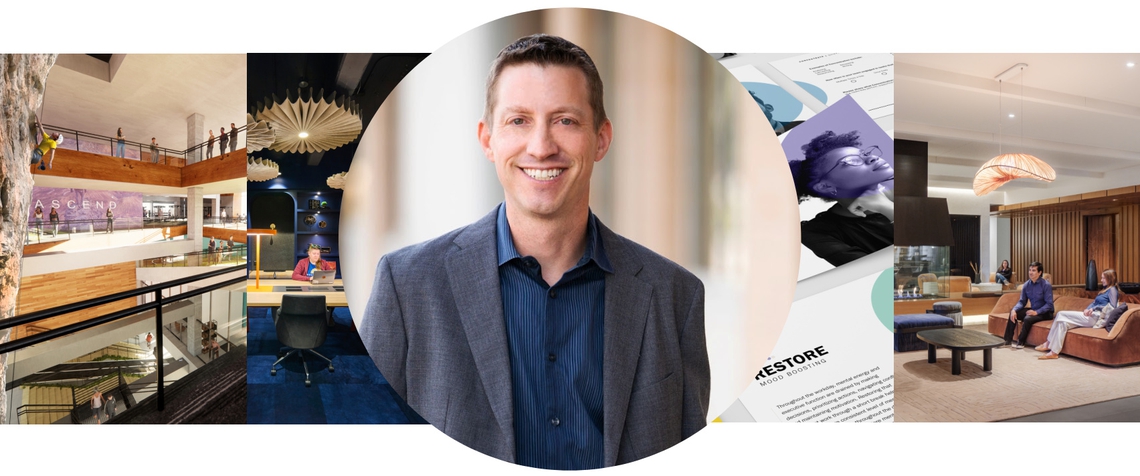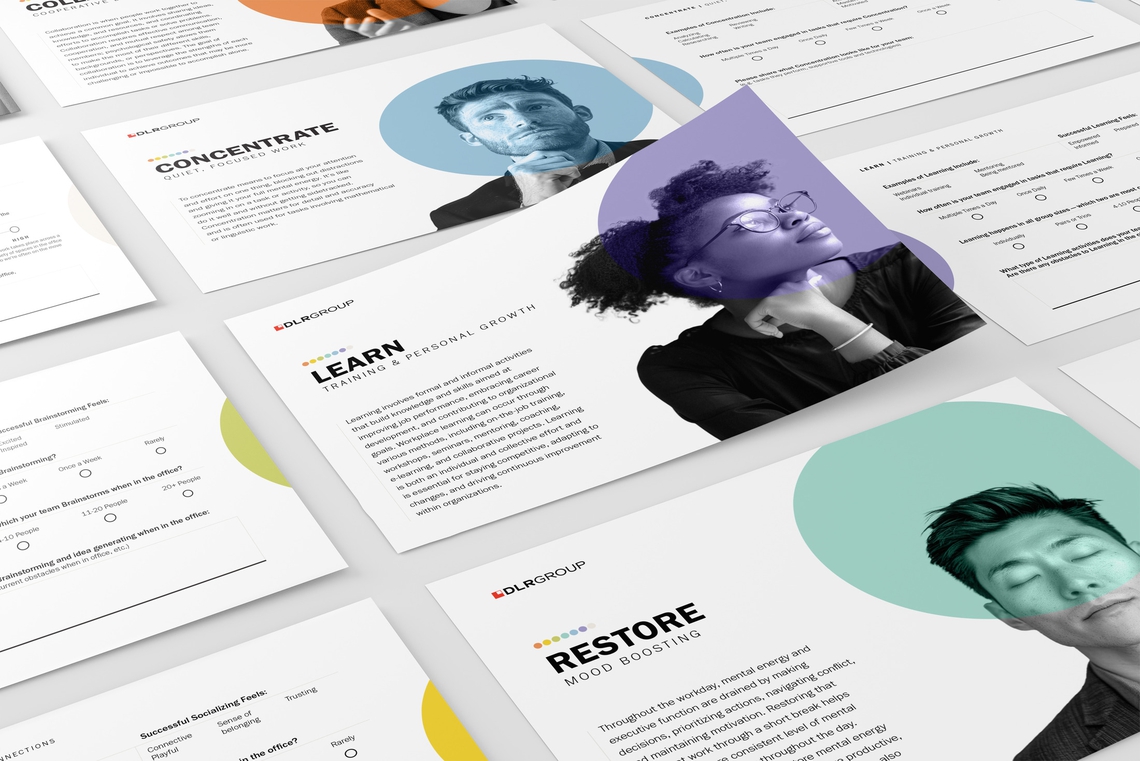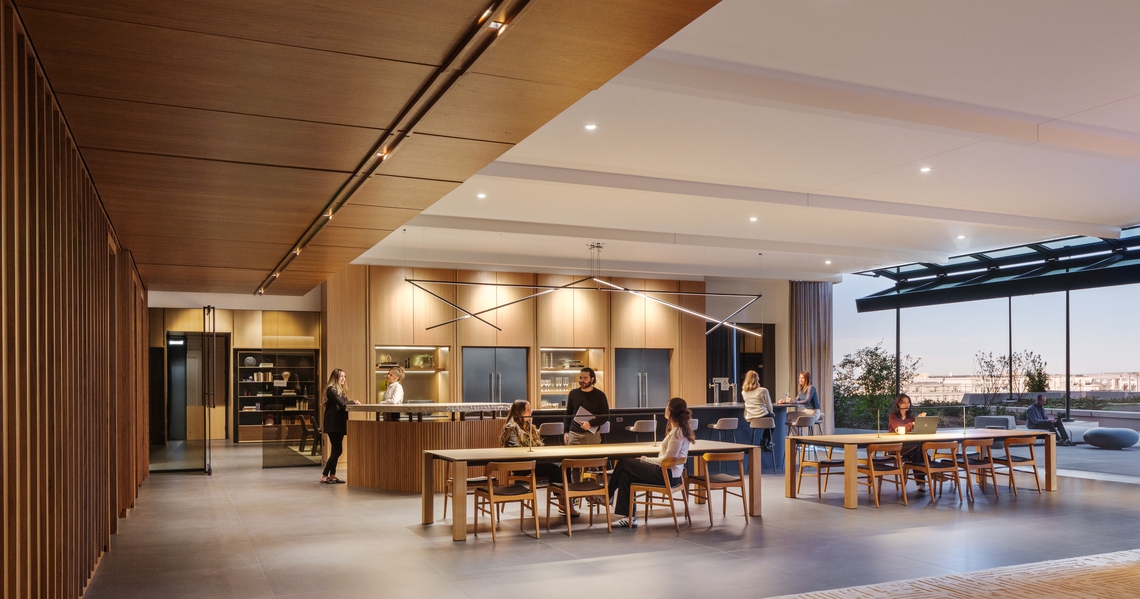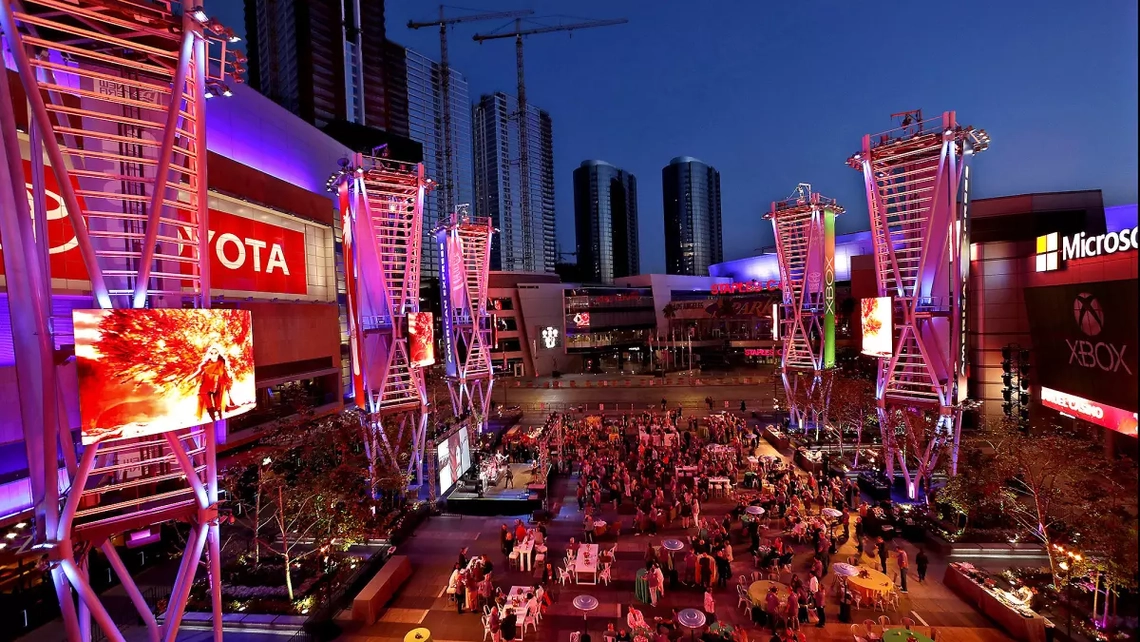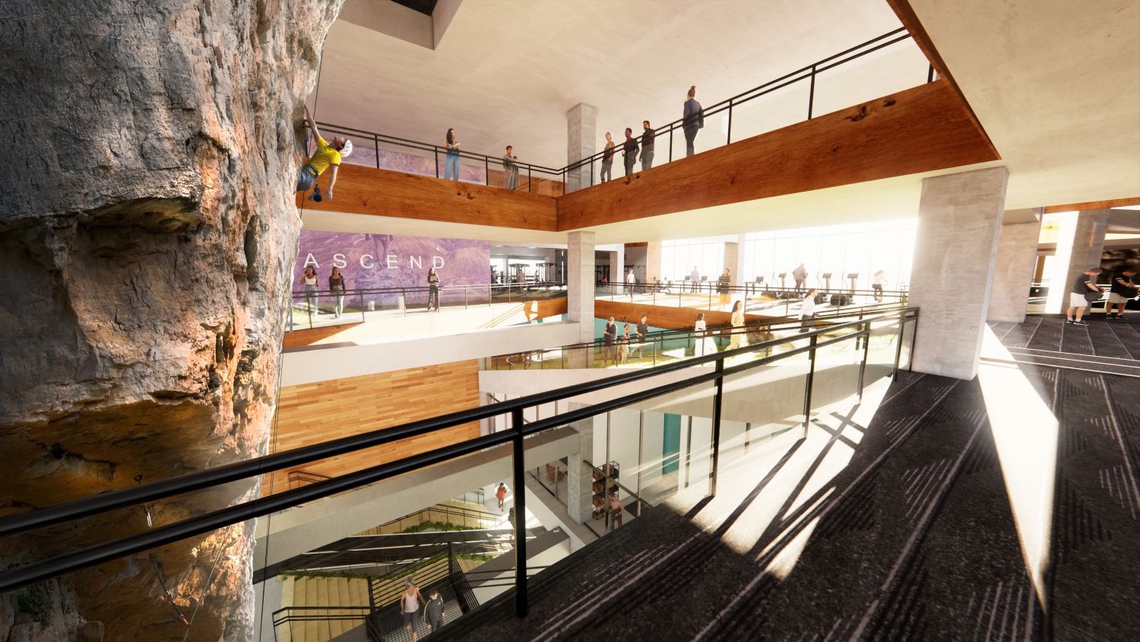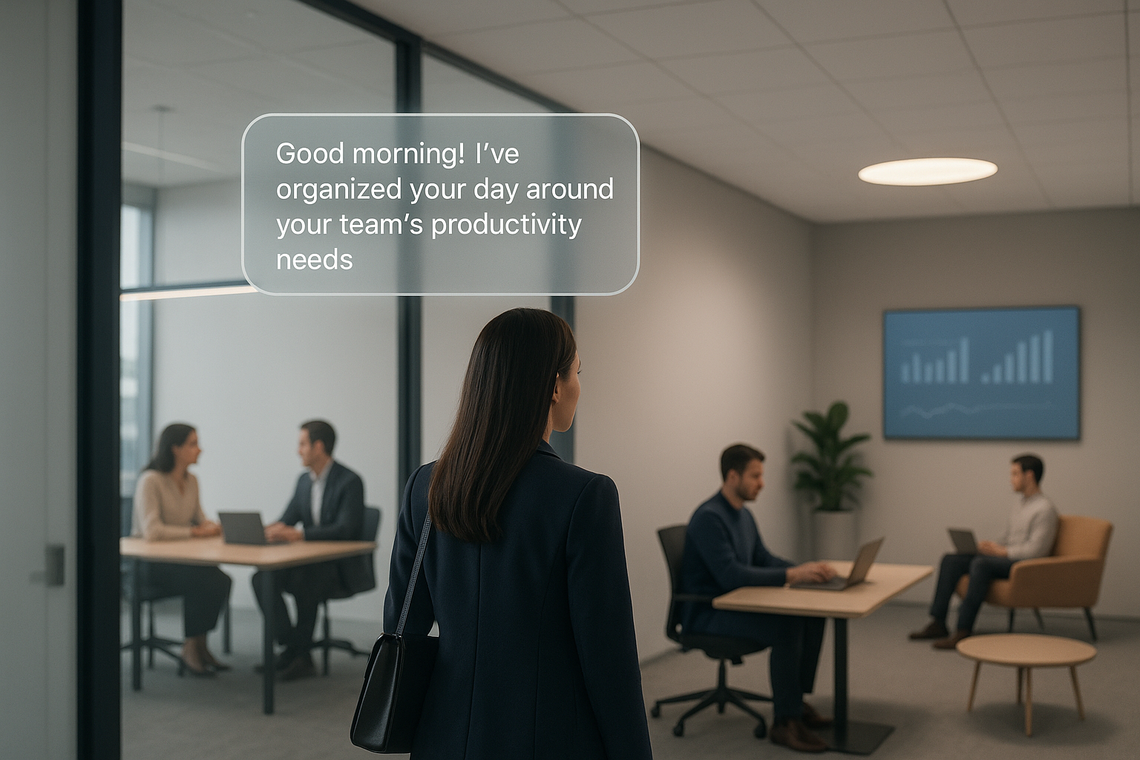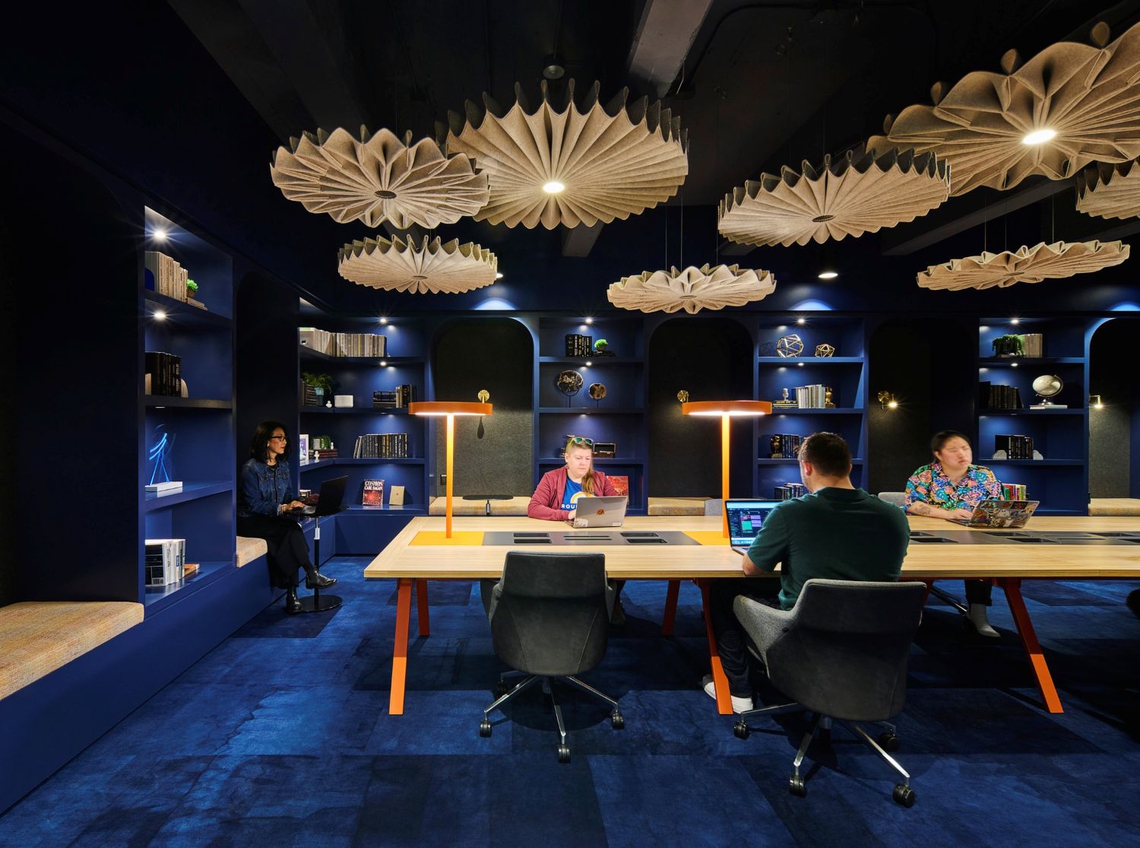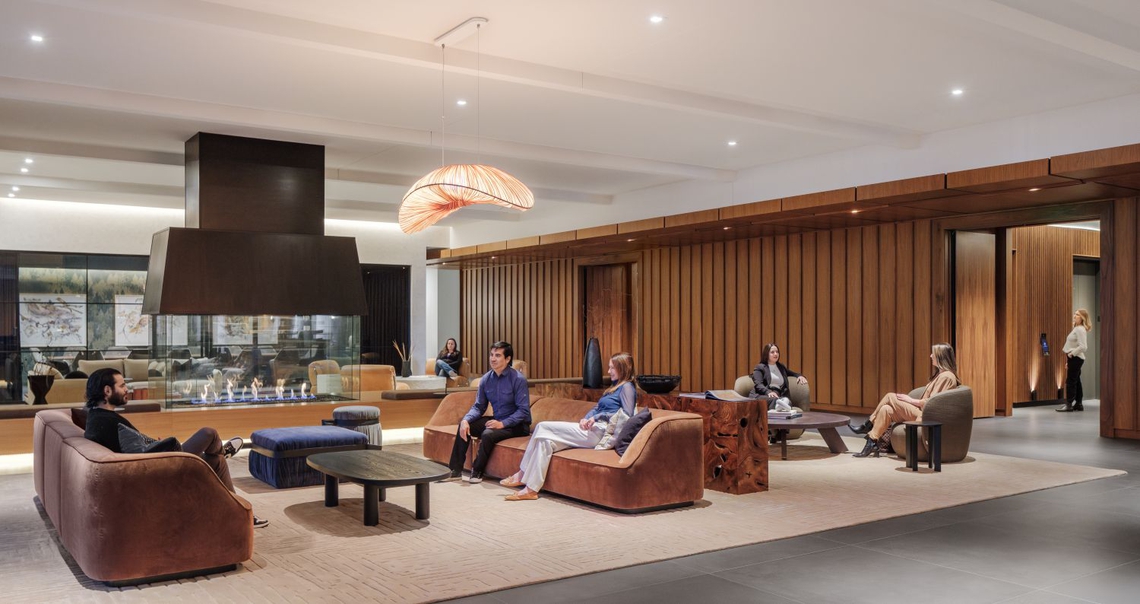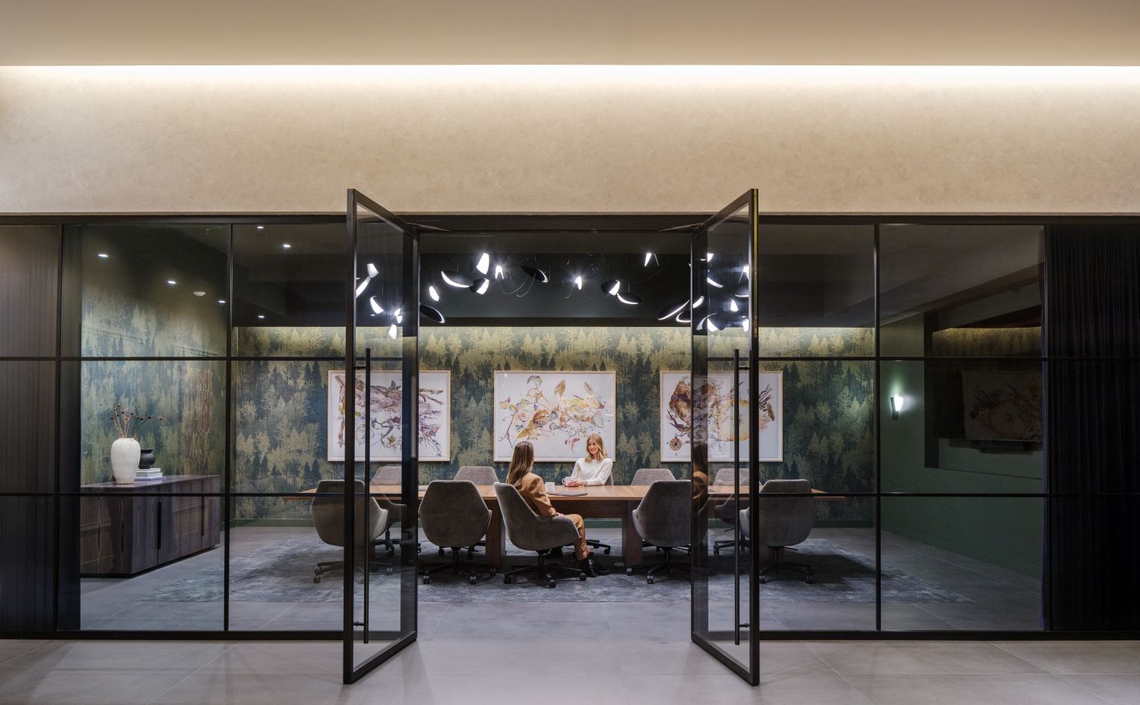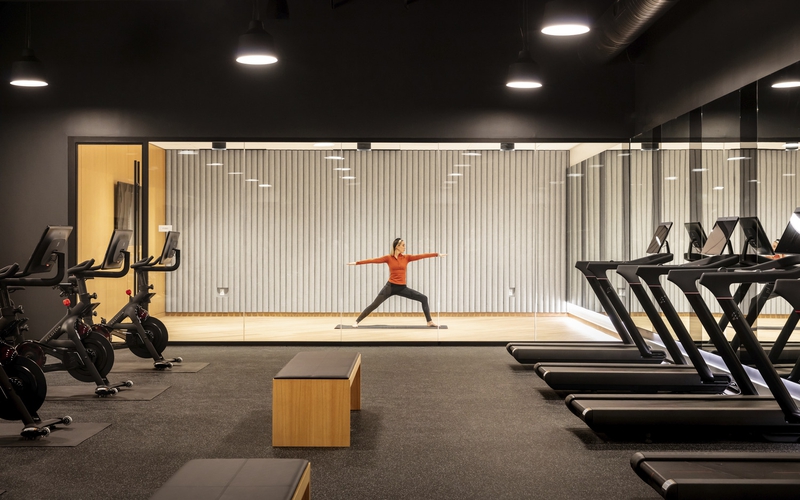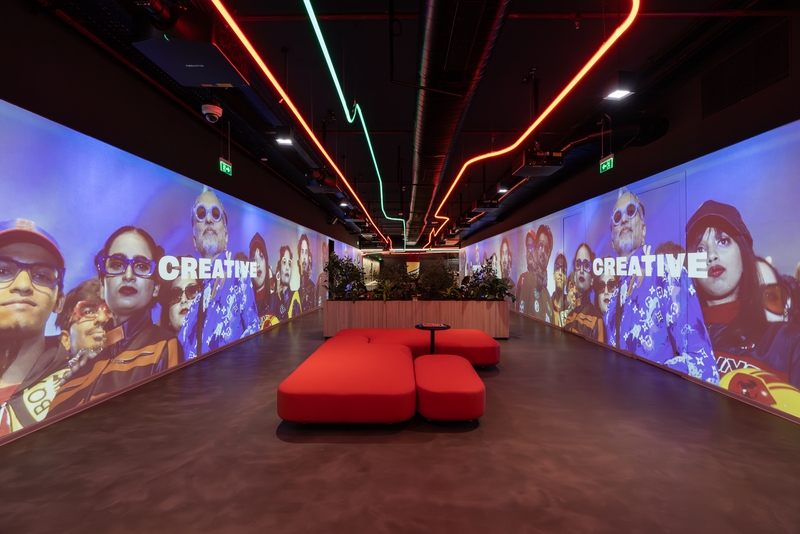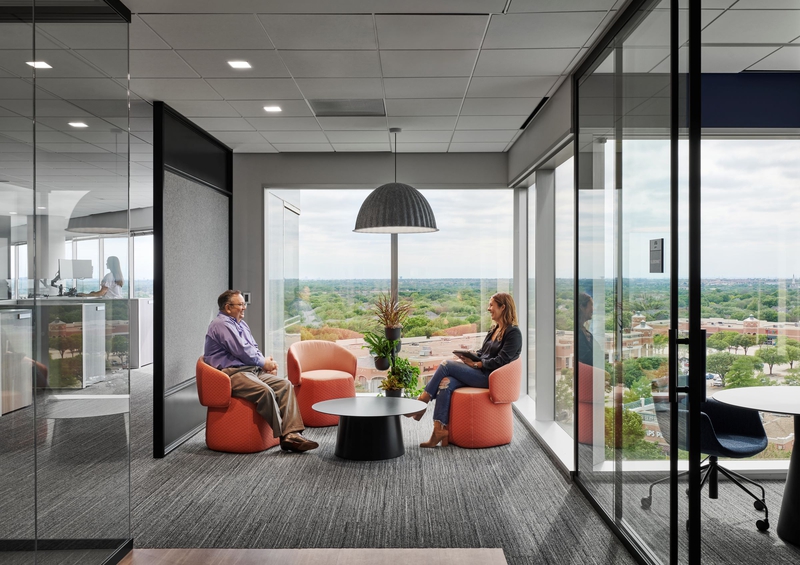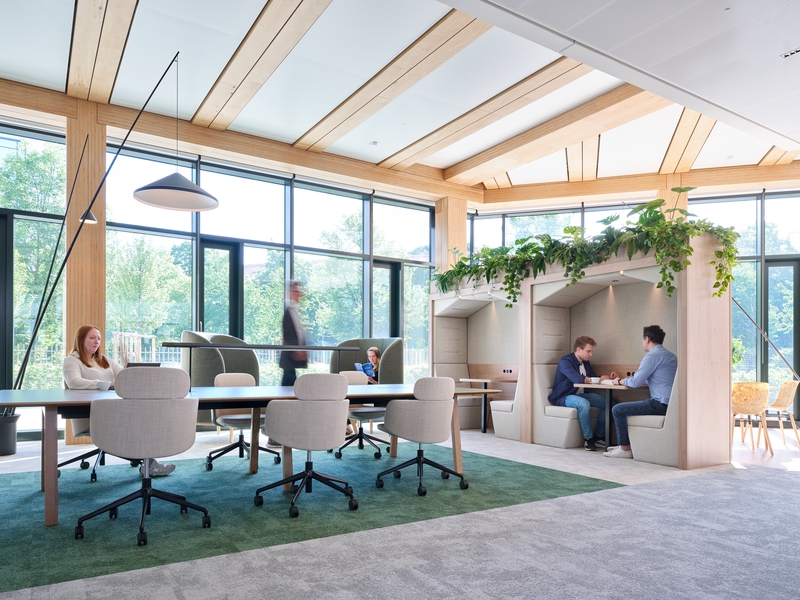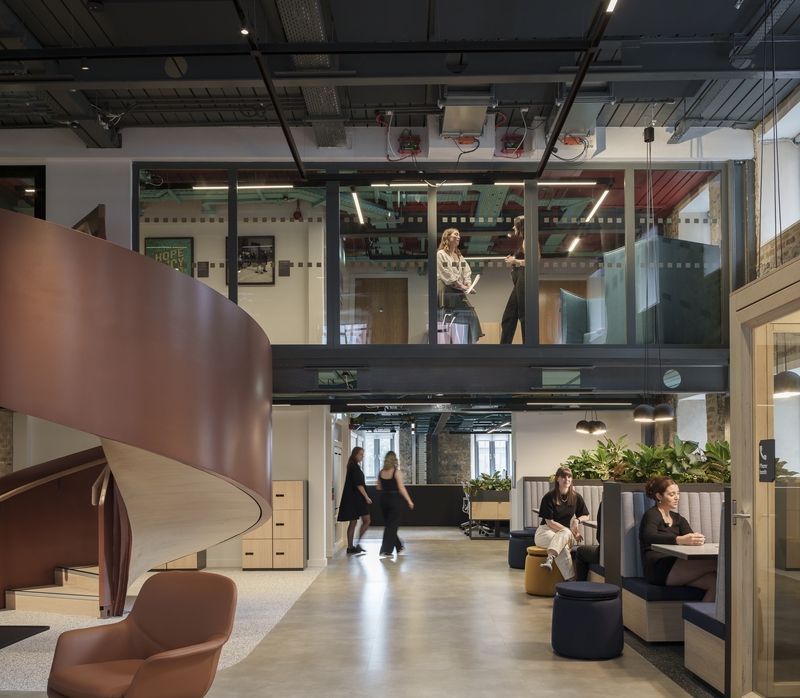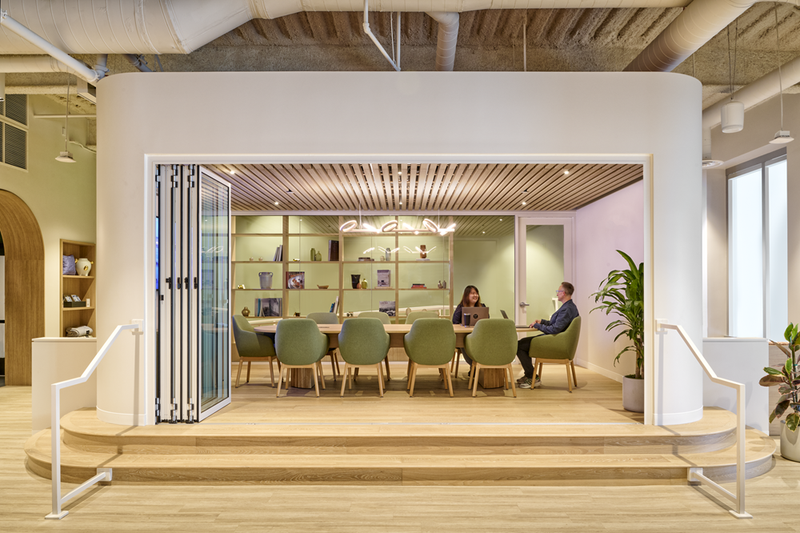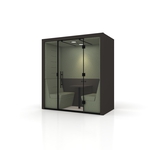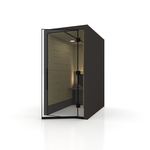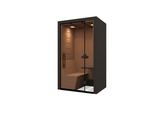Sept. 30, 2025
Industry Trends
What does it mean to design for experience? For Jeremy Reding, Senior Principal, Global Workplace Leader at DLR Group, it begins long before a person even walks through the office door. “With experience-driven design, we consider the individual or group experience throughout the day, and this experience begins when they leave their homes,” he explains. This approach means looking at the arc of an entire day - from morning commute to evening wind-down - and designing spaces that respond to the shifting needs along the way.

Beyond Perks: The True Meaning of Experience
Once, the idea of an engaging workplace was synonymous with game rooms and casual perks. But Jeremy sees the conversation evolving. “What users are looking for now are spaces that best support team engagement, personal productivity, and a space that can tell a story,” he says. Putting depth before novelty, spaces that matter are those that embed culture into place, weaving together productivity and experience through a coherent design narrative.

The Rise of the 15-Minute City
This shift ties closely to larger urban patterns. The ‘15-minute city’ model, where people can live, work, play, and connect all within a short walk or bike ride, is shaping expectations around the workplace. As Jeremy notes, the pandemic accelerated appreciation for reclaiming commute time. Now, people want workplaces that sit within broader experience-rich developments, where fitness, dining, hospitality, and work intersect. Offices are no longer isolated buildings but integral parts of vibrant community nodes.

Work as Part of the Wider Experience
Jeremy points to examples where the workplace merges seamlessly into a wider cultural ecosystem. LA Live in Los Angeles, which combines hospitality, sports, multifamily living, music, and workplace, is one such project. It demonstrates how environments designed for energy and connection spill over into work life, creating a magnetism that draws employees in. “It creates a magnetic energy that encourages employees to want to work in that area,” Jeremy reflects. This blending of work and leisure is only set to intensify as the boundaries between office hours and personal time blur.
Even in his teaching at the University of Nebraska–Lincoln, Jeremy sees a generation of students who imagine workplaces far removed from the conventional office. Their concepts include climbing walls, yoga, fresh-pressed juice bars, and coworking spaces all under one roof. For them, work is far from a separate silo - functioning more as one strand, woven into a larger lifestyle fabric.

AI and the Invisible Interface
But what about the next frontier? For Jeremy, it lies in technology’s quiet integration into daily routines. “Soon AI is going to enable the invisible seamless interface; instead of having to input needs into a device, the office itself will become the interface,” he says. Picture arriving at work and having your AI assistant organize your day around team productivity needs, or rooms that subtly shift their lighting and airflow depending on the activity. Even ambient music could recalibrate to support focused work or energizing collaboration. The vision is an office that anticipates needs before they’re expressed, tailoring the environment for each individual.

Rediscovering the Power of Low-Tech
Yet alongside the embrace of technology, Jeremy foresees a countercurrent. Just as vinyl resurged amid streaming, and slow food gained traction alongside fast food, workplaces will continue to carve out intentional no-tech zones. Spaces designed for privacy, authenticity, and connection will hold enduring appeal. In the Senior Principal’s words, this means “no-tech spaces for private conversation, areas to connect with nature and handmade materials, and spaces for team connection / socialization.” In a hyper-connected world, the absence of tech may prove to be one of the most powerful tools of all.

Lessons from Hospitality and Entertainment
What can the workplace borrow from other industries? Hospitality, Jeremy argues, has mastered the art of extending experience beyond a single moment. From the sensory choreography of scent, touch, and taste to the rituals of welcome and memory, hotels and entertainment venues excel in shaping journeys that linger. The workplace can learn from this, too: “What is the user’s journey from the moment someone leaves their home? How are we helping users to prepare for their day? How can we best support team engagement or individual work? How can we support a healthy lifestyle? How do we capture the best moments in a way that allows them to be remembered?”

Looking Ahead: The Future of Experiential Design
When asked to forecast what an experience-driven workplace might look like a decade from now, Jeremy outlines three themes. First, the Invisible Interface: spaces where technology recedes into the background and the office itself becomes responsive. Second, a Feeling of Wellness: environments attuned to physical and emotional well-being, from air quality to acoustics. Third, a Dynamic, Evolving Aesthetic: places where design is not static but adaptive, shifting with users throughout the day. “The workplace will feel less like a building and more like a supportive partner,” he concludes.
The takeaway? Experience is no longer about perks or spectacle. It’s about workplaces that integrate seamlessly into life, anticipate needs, and offer moments of both connection and calm. Jeremy Reding’s vision is of spaces that work with us - a design philosophy that redefines the role of the office in the fabric of our lives.
Share this article

